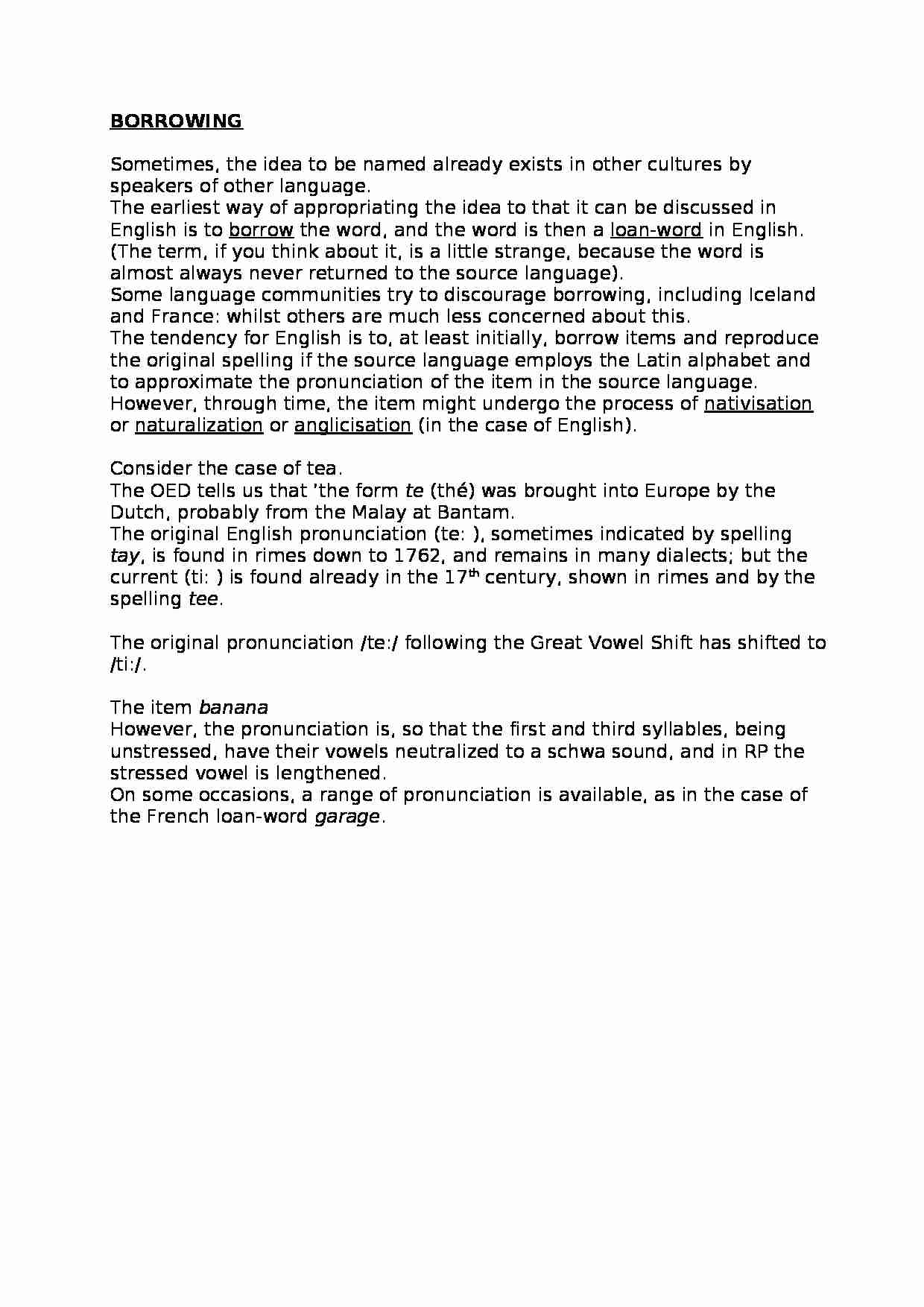
BORROWING
Sometimes, the idea to be named already exists in other cultures by speakers of other language.
The earliest way of appropriating the idea to that it can be discussed in English is to borrow the word, and the word is then a loan-word in English.
(The term, if you think about it, is a little strange, because the word is almost always never returned to the source language).
Some language communities try to discourage borrowing, including Iceland and France: whilst others are much less concerned about this.
The tendency for English is to, at least initially, borrow items and reproduce the original spelling if the source language employs the Latin alphabet and to approximate the pronunciation of the item in the source language.
However, through time, the item might undergo the process of nativisation or naturalization or anglicisation (in the case of English).
Consider the case of tea.
The OED tells us that `the form te (thé) was brought into Europe by the Dutch, probably from the Malay at Bantam.
The original English pronunciation (te: ), sometimes indicated by spelling tay, is found in rimes down to 1762, and remains in many dialects; but the current (ti: ) is found already in the 17th century, shown in rimes and by the spelling tee.
The original pronunciation /te:/ following the Great Vowel Shift has shifted to /ti:/.
The item banana
However, the pronunciation is, so that the first and third syllables, being unstressed, have their vowels neutralized to a schwa sound, and in RP the stressed vowel is lengthened.
On some occasions, a range of pronunciation is available, as in the case of the French loan-word garage.
... zobacz całą notatkę



Komentarze użytkowników (0)